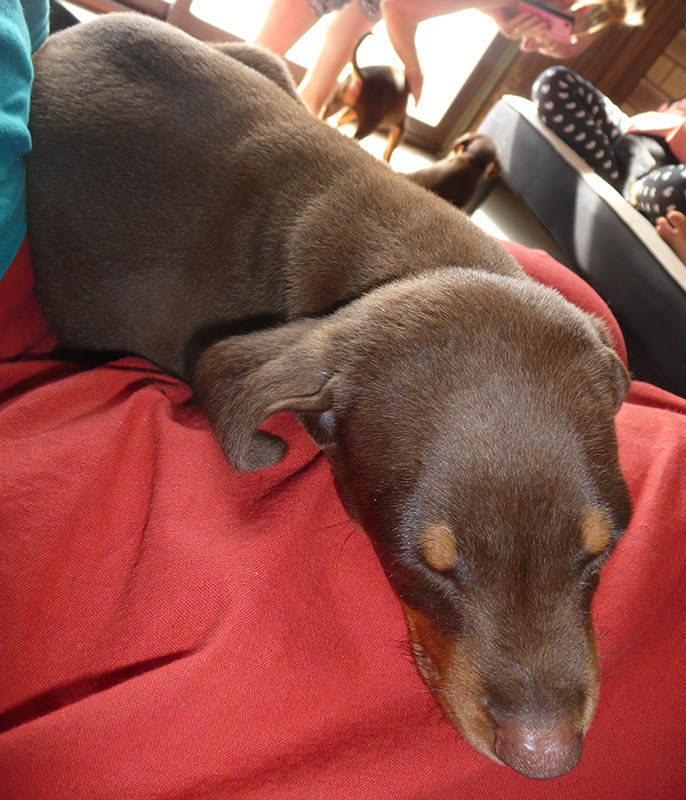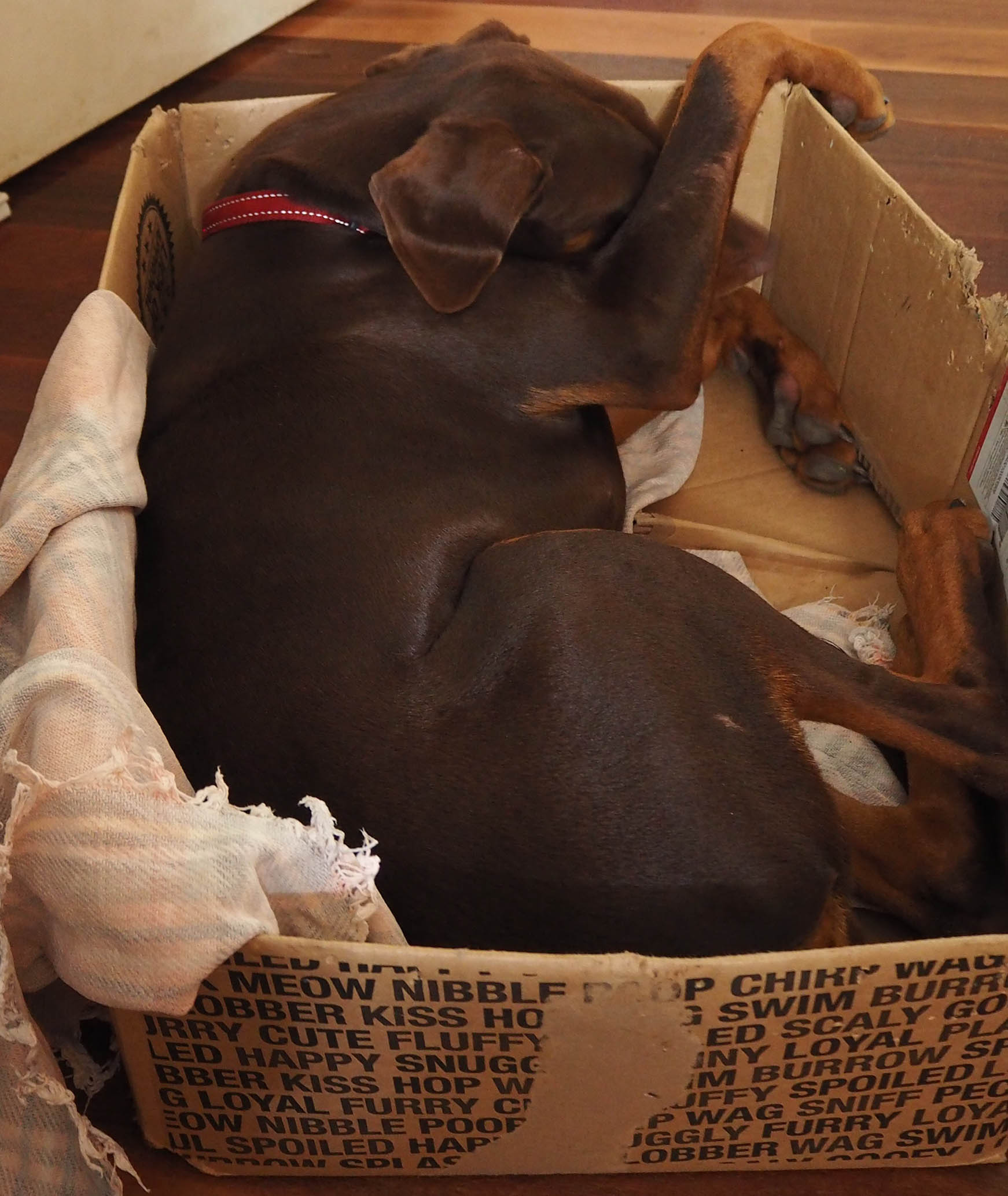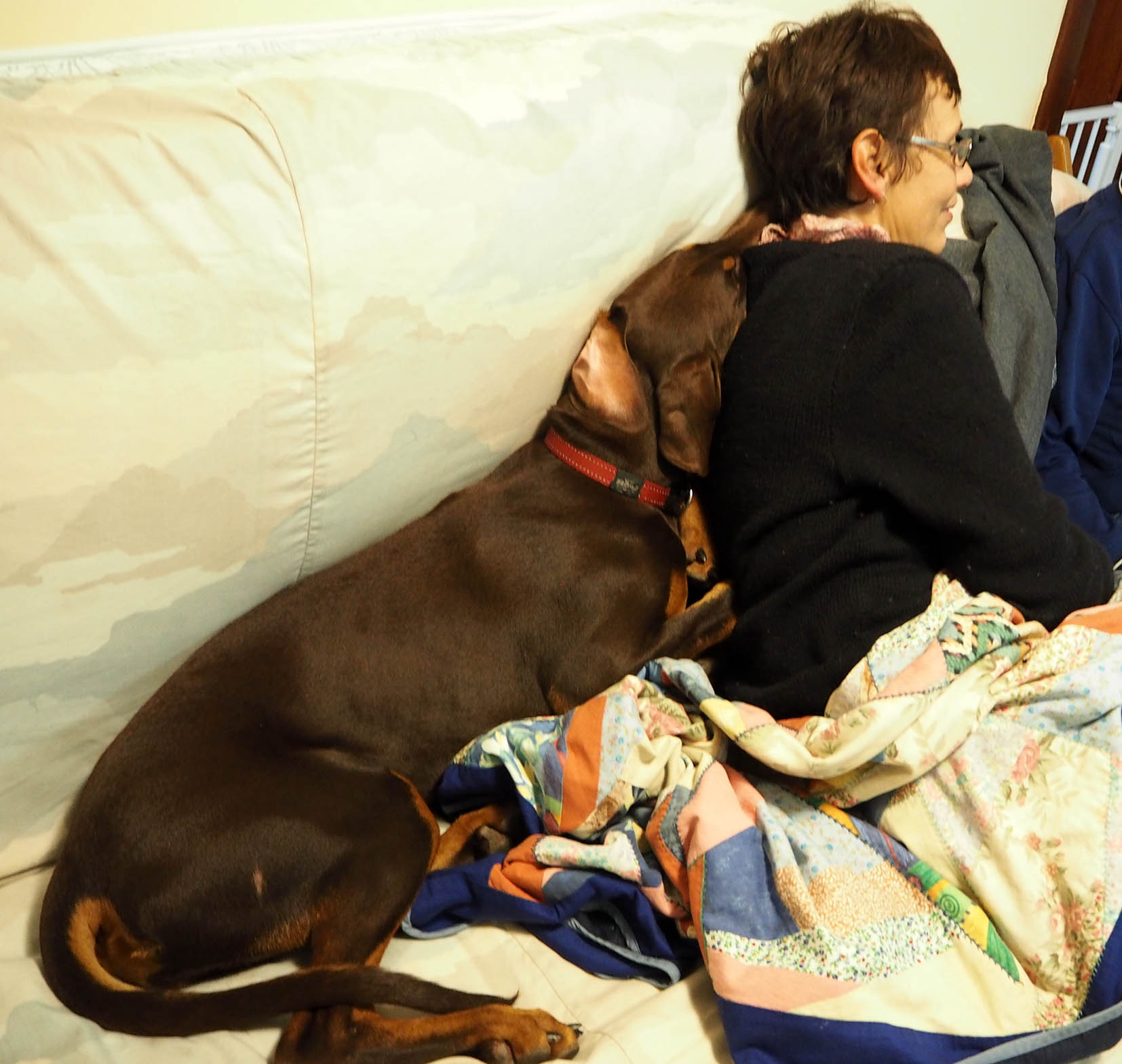Dog wrangling
Dogs have been part of our household landscape for as long as I can remember, from my faithful childhood hound (Gypsy) to our current puppy many years later. At various times we’ve shared our home with a range of Heinz-57s (mixed-breed dogs), a Border Collie (briefly), a Welsh Springer Spaniel, Labradors, German Shepherds – and now have a young Doberman. I’ve spent years dog wrangling: from feeding, grooming, exercising and training to planning holidays around their needs. None of these things has been particularly arduous – indeed most of it’s actually fun, but it’s an ongoing commitment. In a blogpost last year I introduced you to Miss Molly, the most recent addition to the family. Seven months on, she continues to take great delight in showing me in various an assorted ways (every day) that a Doberman poses a few challenges I’ve not encountered with our other dogs.
Until MissM joined the family, I firmly believed that dogs should sleep in their own beds, ideally in the laundry or kitchen. I still believe that… but it turns out that my bed is super comfortable and my pillows especially so. Indeed, if my head happens to be on my pillow… well… heads are apparently pretty comfortable too. It turns out that Dobermans are very people focused. What this means is they don’t much like being on their own. In fact the closer they are to you, the happier they seem to be. If you stand still for more than a few seconds you end up with a large lump of dog leaning against the back of your legs. You move, she moves – and leans. I’ve discovered that the all-time favourite Doberman zone appears to be a lap – pretty much any lap, really. MissM fitted in mine quite comfortably when she was 12 weeks old and she got the idea that this was a thing.

At 10 months she’s quite a lot bigger and ends up draping herself across me when I sit at my computer, which definitely doesn’t work for me – although she seems perfectly happy with the arrangement if that’s all that’s available. This up-close-and-personal attribute of Dobes has been both my biggest challenge (not what I’m used to in a dog) and surprisingly enjoyable and companionable.
MissM’s big chest, sleek head, strong legs and narrow waist (not to mention rather pointy claws) make her a very elegant looking dog. This is misleading, as she’s actually all paws, legs, claws and very wet tongue – and is keen to share all of them. Doberman pups are happy, friendly, waggy-tailed and will do anything for food – and for attention. They are jumping dogs – both on and up. Ours jumps to my (not insignificant) shoulder height with all four feet off the ground when she’s excited. She’s very excitable…
Dobes are also stubborn, wilful, tend to be mouthy (and by this I mean both barky and chewy) and need firm, consistent behaviour modification. This means grabbing the pup gently but firmly by the shoulders or collar when they transgress and telling them NO in a deep, firm voice. Every time they transgress. They learn fast, but will push your limits until they’ve figured out that they won’t win that particular little battle. Reinforcing the NO with eye contact helps, but it takes consistent (and exhausting) repetition on some fronts.
In MissM’s case, we have two particular challenges. One is her tendency to jump up on us (and visitors) and the other that she grabs our hands in her mouth. In a small pup this may seem cute(ish), but in a big dog it’s no fun at all and needs to be nipped in the bud – or as soon as plausible. Despite all suggestions from friends and family on this front, Dobermans really don’t respond well to physical punishment, such as a rolled up newspaper swat to the bottom, and are particularly mood sensitive to their owners.

So, to solve the jumping issue, we’re getting her to SIT before being greeted or patted by anyone. In a matter of days we saw an improvement – although training some visitors is almost as challenging as training MissM! With regards to the ‘mouthing’, we’re trying object replacement. When she grabs at hands, first comes the NO, then offering a replacement – an appropriate chewable item – and placing it in her mouth if necessary. When she chews on the toy instead of the hand, she gets praised immediately. If she tries chewing hands again – then it’s rinse-and-repeat: more of the NO – more of the replace with a toy, etc. Repetition and consistency really are the keys to success, along with patience. Bucket loads of patience…
What I don’t get is how this breed got such a scary reputation. They’re definitely super protective – and a stiff-legged, deep-chested baying bark resounds around the neighbourhood every (every!) time anyone walks past the house. Actually, car doors shutting, the chickens scrabbling in the hutch and a wide range of other sounds also initiate a Hound of the Baskervilles response. Loud? Definitely. Scary? Well, I’ve an idea that popular culture has a lot to do with these perceptions.
Having said that, I’d say that taking your Doberman (or any puppy, really) to training should be mandatory. If nothing else, it trains the owner/handler in how to manage themselves, which makes it easier for the dog to be compliant. Eventually.

Haha you didn’t mention the habit she has of trying to sit on shoulders or heads if they’re close enough to ground level, or the howling when left alone even for ten minutes of being in disgrace for being naughty…